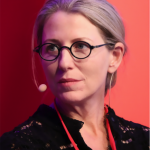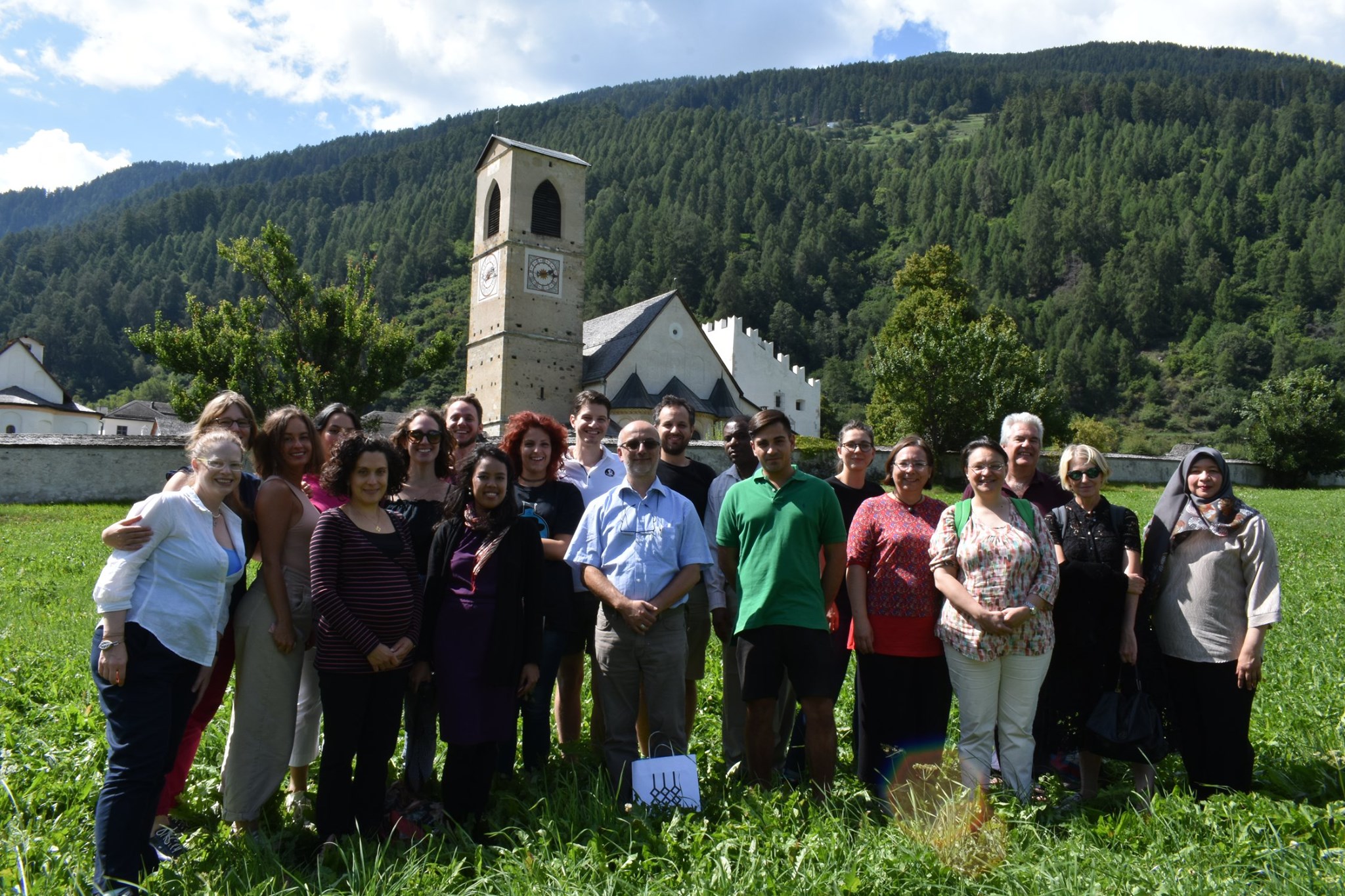Summer School of the UNESCO chair in ICT to develop and promote sustainable tourism in World Heritage Sites
LeVERAGE ICTs for Tourism
Information and Communication Technologies in Tourism for preserving LiVing hERitAGE
August 24-31, 2019 – Lugano & Müstair, Switzerland
Photo Credits: Mona Hess & USI UNESCO Chair
The 2019 Summer School of the UNESCO chair took place in Switzerland: the activities of the first two days (August 24th and 25th) ran within the 2019 edition of the MEM Summer Summit in Lugano, then the group moved to Val Müstair, home to the Benedictine Convent of St John at Müstair, a UNESCO World Heritage Site. The focus this time was on living heritage, which is living practices and expressions passed down from generation to generation and constantly recreated by communities in response to their environment, their relationship with nature and their history. The importance of living heritage is not the cultural manifestation itself but rather the wealth of knowledge and skills that is transmitted.
Lectures, visits to UNESCO World Heritage Sites and Biospheres reserves, hands-on exercises and a range of formal and informal activities allowed participants to understand how to leverage ICTs for

Virtual Summer School
Those who could not participate in person, attended the “Virtual Summer School”, which made accessible resources and presentation videos etc. based on the on-place experience. The eLearning platform has been active until 31.08.2020. All contents (presentations, videos, images, audio recordings etc.) are archived for further access and usage after the Summer School.
Who Particiapted
Researchers:
- Advanced Master students
- PhD students
- Post Docs
Practitioners:
- World Heritage Managers
- DMOs
- Interested tourism and heritage professionals
Partners


Lecturers
 Silvia Aulet – University of Girona, Spain Silvia Aulet – University of Girona, Spain |
 Lorenzo Cantoni – USI – Università della Svizzera italiana, Lugano, Switzerland Lorenzo Cantoni – USI – Università della Svizzera italiana, Lugano, Switzerland |
 Patrick Cassitti – Scientific director of the Foundation Pro Kloster St. Johann, and University of Innsbruck Patrick Cassitti – Scientific director of the Foundation Pro Kloster St. Johann, and University of Innsbruck |
 Silvia De Ascaniis – USI, Lugano, Switzerland Silvia De Ascaniis – USI, Lugano, Switzerland |
 Mona Hess – Otto-Friedrich-Universität Bamberg, Germany Mona Hess – Otto-Friedrich-Universität Bamberg, Germany |
 Sarah Kenderine – EPFL – École Polytechnique Fédérale De Lausanne, Switzerland Sarah Kenderine – EPFL – École Polytechnique Fédérale De Lausanne, Switzerland |
 Ricco Maggi – USI, Lugano, Switzerland Ricco Maggi – USI, Lugano, Switzerland |
 Marco Meschini – USI, Lugano, Switzerland Marco Meschini – USI, Lugano, Switzerland |
 Engelbert Ruoss – USI, Lugano, Switzerland |
 James Blake Wiener – Co-Founder and the Communications Director at Ancient History Encyclopedia |
Visits to …
Benedictine Abbey Marienberg (IT)
“The Monte Maria Monastery – “Kloster Marienberg” in German, “Abbazia di Monte Maria” in Italian – is located above Burgusio (Burgeis), in the municipality of Malles in the Val Venosta valley. The white, castle-like building dates back to the 12th century and was donated by the Nobles of Tarasp. Today the monastery has got 11 members, living according to the rules of the Saint Benedict of Nursia.” (Suedtiroland.it 2018)
“The Biosfera Val Müstair is a regional nature reserve of national importance and, together with the Swiss National Park and parts of the municipality of Scuol, forms the first UNESCO high Alpine biosphere reserve in Switzerland.” (MySwitzerland.com 2018)
A workshop experience, producing hand-woven textiles on 19th-century looms.
Benedictine Abbey Marienberg (IT)
“The Monte Maria Monastery – “Kloster Marienberg” in German, “Abbazia di Monte Maria” in Italian – is located above Burgusio (Burgeis), in the municipality of Malles in the Val Venosta valley. The white, castle-like building dates back to the 12th century and was donated by the Nobles of Tarasp. Today the monastery has got 11 members, living according to the rules of the Saint Benedict of Nursia.” (Suedtiroland.it 2018)
Town of Gluns/ Glorenza (IT)
“Glorenza, the smallest town in South Tyrol, works its magic on every visitor with its charming medieval atmosphere, perfectly preserved town walls and its three picturesque gate towers. Virtually unchanged since the 16th century, there are echoes of the eventful history of this former trading town around every corner.” (Glurns.eu 2018)
Castle Coira/ Churburg (IT)
“One of the best preserved castles of South Tyrol rises at the entrance of the Val di Mazia valley at Sluderno (Schluderns) and is called Castel Coira – “Churburg” in German. In 1259, this building was mentioned for the first time as “Curberch” in a document of Archbishop Heinrich von Monfort, which had the castle built around 1250.” (Suedtiroland.it 2018)
Castle Coira/ Churburg (IT)
“One of the best preserved castles of South Tyrol rises at the entrance of the Val di Mazia valley at Sluderno (Schluderns) and is called Castel Coira – “Churburg” in German. In 1259, this building was mentioned for the first time as “Curberch” in a document of Archbishop Heinrich von Monfort, which had the castle built around 1250.” (Suedtiroland.it 2018)
Castles of Bellinzona (CH)
“The castles of Bellinzona are one of Ticino’s main attractions and, with the old walls that are still standing, are the sole medieval military complex in the Alpine region. They became part of the UNESCO World Heritage in 2000.” (TicinoTopTen.ch 2018). The 2019 Summer School visited one of the castles.
Experience of local intangible heritage …
- local food
- life in the Abbey
- history of the region

Sculpture of Charlemagne (Abbey of St John at Müstair) Source: https://www.ancient.eu/image/9229/sculpture-of-charlemagne—abbey-of-saint-john-at-/


